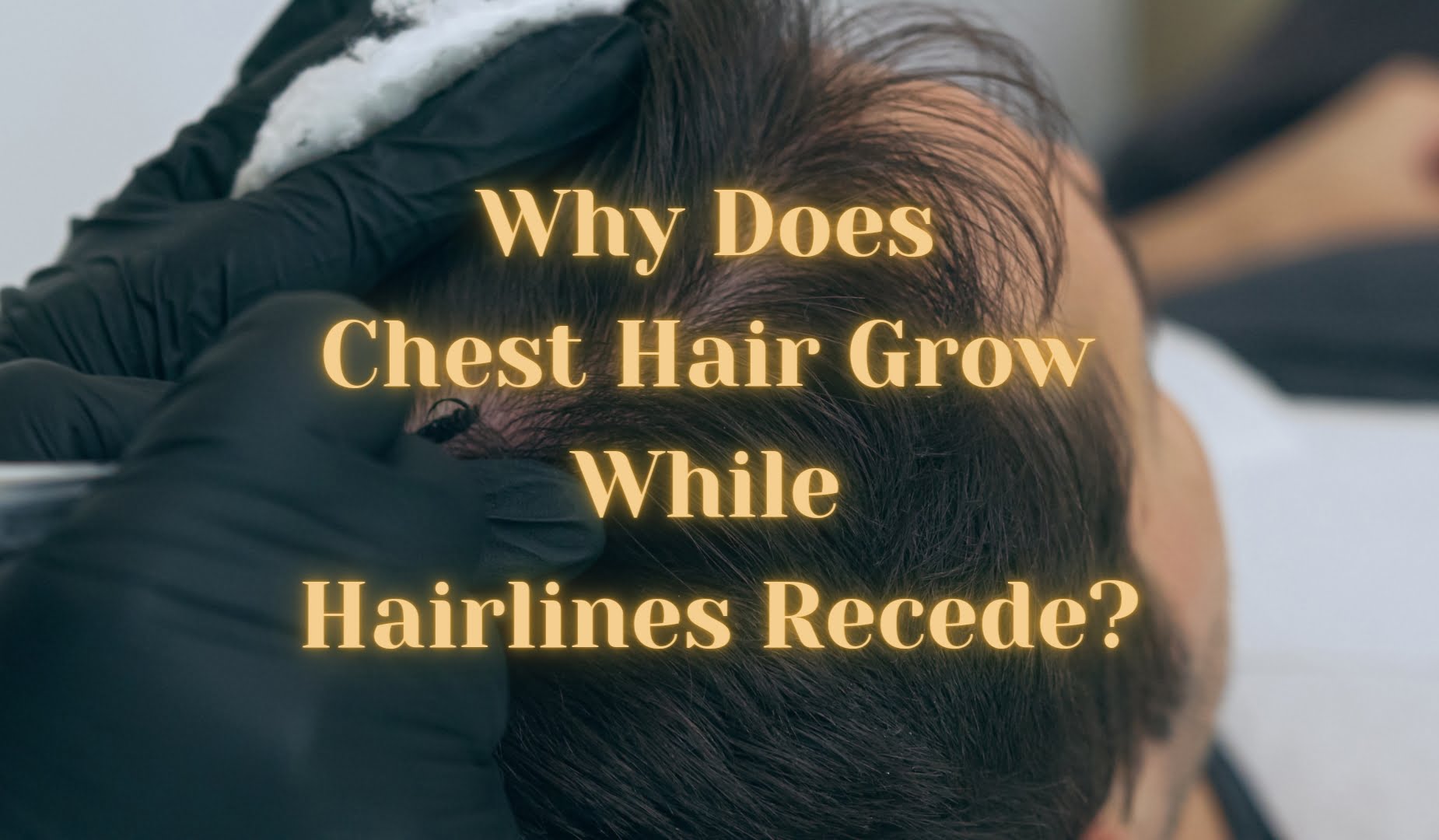Hair loss can cause a lot of frustration and stress, especially if it starts happening to someone quite young. Around the world, 50% of women and 60% of men experience hair loss, which is quite a high number. Everyone likely knows someone who has experienced or is currently going through it. They might be confused as to why they’re experiencing a receding hairline while the hair on their chest continues to grow.
Here are some key things about receding hairlines to help you stress less and learn more about hair growth.
Differences Between Chest Hair And Scalp Hair
There are a few differences between the hair that grows on the scalp and the hair that grows on the rest of the body. In general, there are three stages to hair growth:
- Anagen
- Catagen
- Telogen
The hair on the scalp stays in the anagen stage for a long period, whereas body hair quickly moves from anagen to catagen. This may cause chest hair to be more coarse and curlier than the hair on the head. Both then move onto the telogen stage when testosterone hits the areas and has different effects on each. For the scalp, it makes the hair dormant and starts to thin and disappear. However, it has the opposite effect on the body because it causes the hair to grow quicker as it’s in the catagen stage.
If this has happened to you and you want to give the illusion of having more hair, then micro scalp pigmentation can help. It can make you look like your hair is about to grow, which you can get done around your hairline if it’s receding.

Causes Of A Receding Hairline
When hairlines start to recede, it can be extremely frustrating and leave you wondering why it’s happening. The reasons why hairlines recede, or why some people lose hair altogether, can be traced back to these key causes:
- Family history
It’s believed that a hereditary trait causes some men’s hair follicles to become sensitive to male hormones. This may cause the hair to stop growing in specific places, such as the hairline, or all together. The hair often stops growing at the same age for each generation.
- Lifestyle
In some cases, particular lifestyle choices can affect how the hair grows. For example, smoking can increase the rate of hair loss. Links have also been found between diet and hair loss. It’s suggested that people who don’t receive enough protein are more likely to lose their hair than people who get enough.
- Hormone changes
As hormone levels change when people get older, it affects how much and where hair grows. For women, this is often triggered by menopause, and for men. It’s when levels of testosterone change. It’s not always clear how these changes will impact hair growth.
- Illness
Some illnesses can cause hair loss where it’s rapid but may correct themselves without seeking medical help. However, some more serious illnesses, such as alopecia, where hair loss won’t correct itself, and medical help will be needed.
Treatments for Receding Hairline
Here are some possible treatment options:
- Surgery
One of the most heard-about treatments is a hair transplant. This is where hair is taken from a different body part, usually the back, and grafted to the scalp. Side effects can include infections, scalp pain, and bleeding. It’s not a guaranteed method of restoring hair, so there’s always a chance that hair loss will continue.
- Medications
There are a few different medications that people with receding hairlines can take, depending on what’s causing it. One that may be fairly easy to obtain, depending on the location, is minoxidil (Rogaine). This common medication is rubbed onto the area where hair has been lost. Some people find this to be more effective when used to restore a small amount of hair. Another popular medication is finasteride (Propecia), a pill that slows down hair loss.
In conclusion
A receding hairline can be very frustrating, especially when the hair on your chest continues to grow. This happens mainly because when testosterone reaches certain parts of the body, it has different effects on the hair depending on what stage it’s in. A receding hairline can be treated in a few ways, from medication to surgery.
